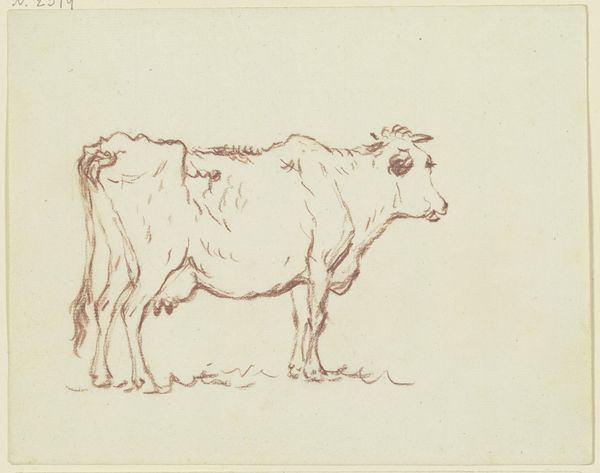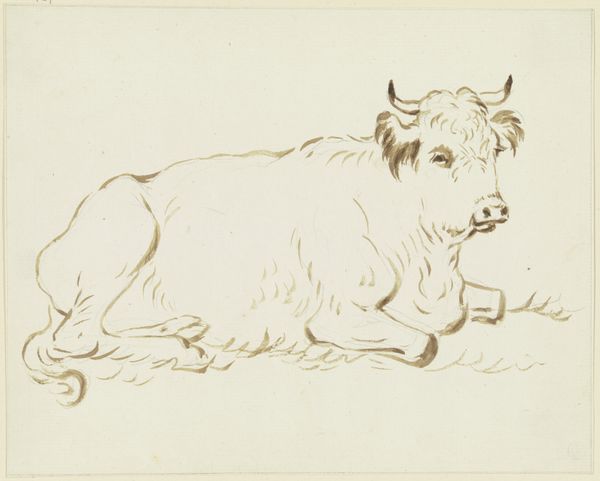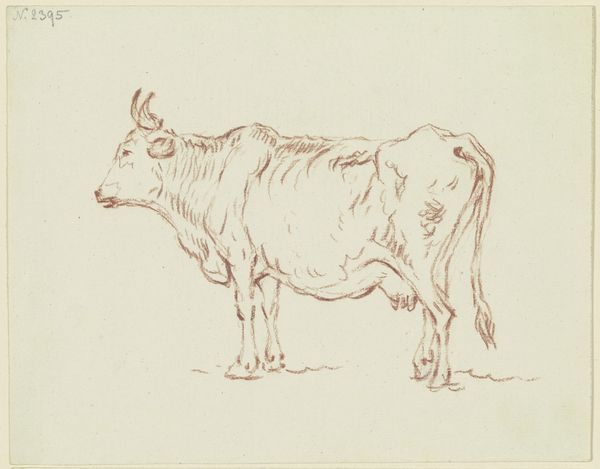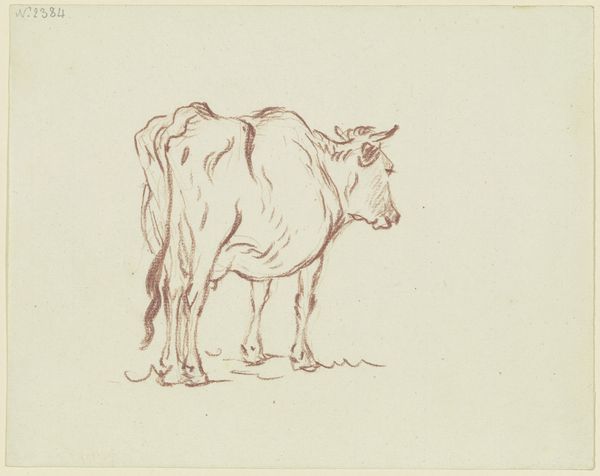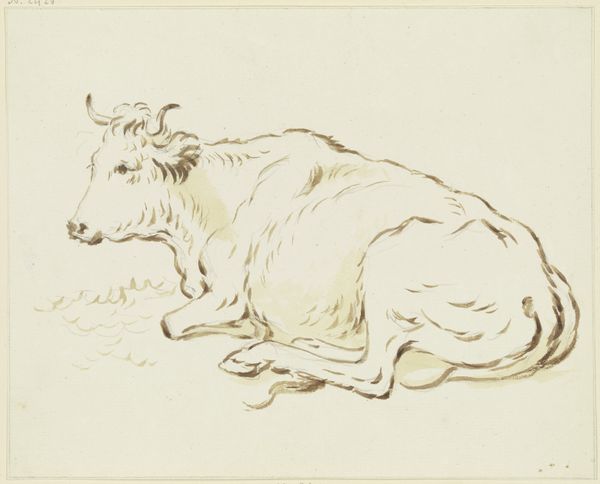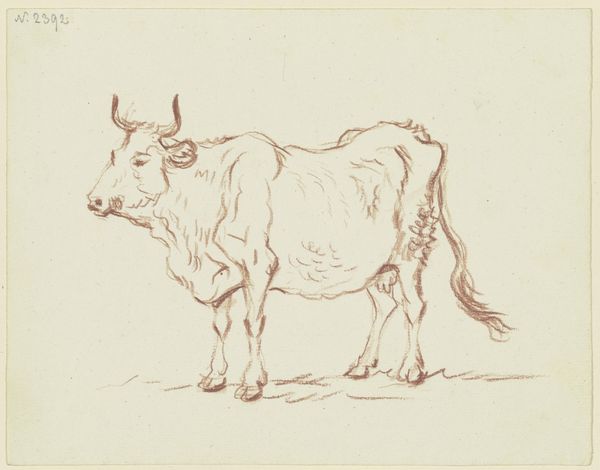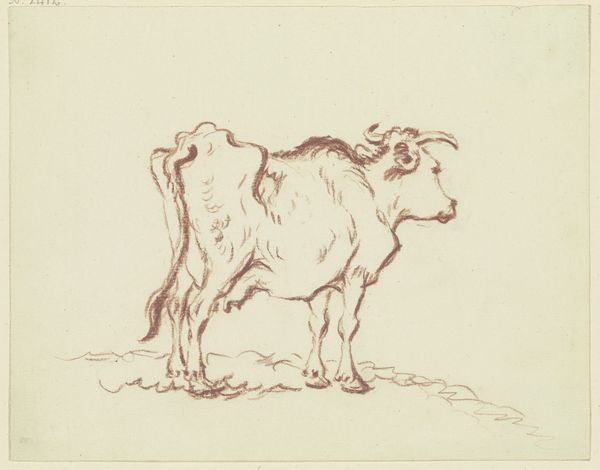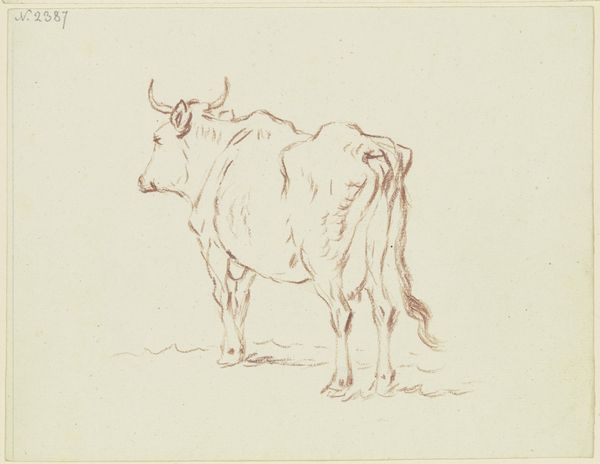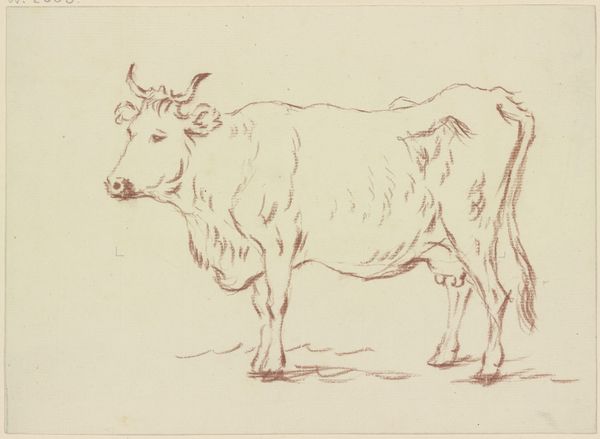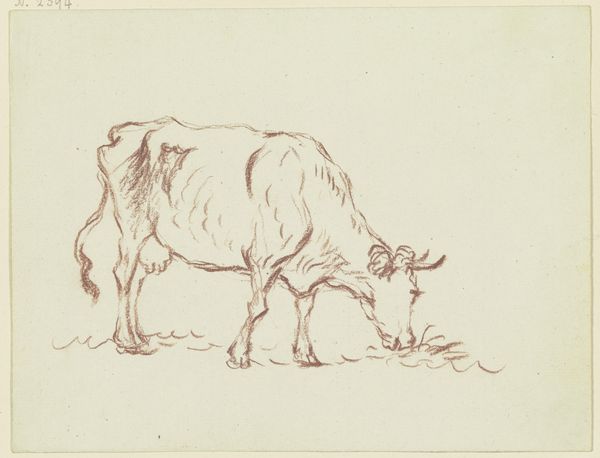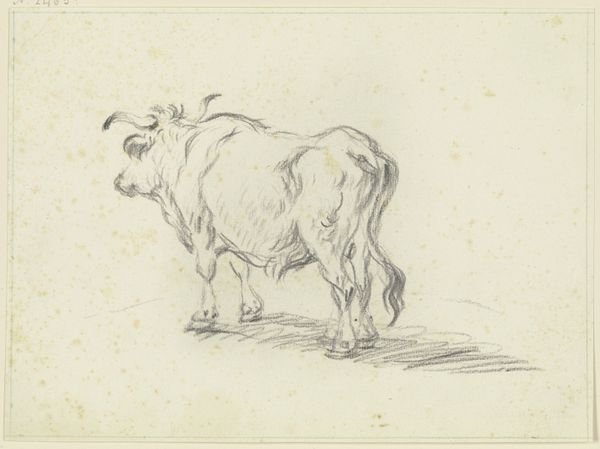
drawing, dry-media
#
portrait
#
drawing
#
landscape
#
dry-media
#
15_18th-century
#
sketchbook drawing
Copyright: Public Domain
Curator: This sketch, rendered in dry media, perhaps chalk or sanguine, depicts a lying cow, its form outlined with a seemingly effortless grace. It's currently housed in the Städel Museum. Editor: It’s incredibly calming, almost pastoral. The economy of line, the bare minimum needed to convey the form...it's quite effective. It reminds me a little of ancient cave paintings, those Lascaux images where line also dominates. Curator: I see your point. It’s difficult to date precisely, placing it generally within the 15th to 18th centuries, so that connection to early drawing methods resonates. Considering its probable function as a preparatory study, it suggests a certain workflow and approach to artmaking. The labor invested in the process is undeniable, even in its spareness. Editor: Right, it *is* spare. Note the interplay of positive and negative space. The absence of detailed shading throws the line work into stark relief. It gives a strong sense of form without overly defining every detail. Look at how those curves create the mass. Curator: Precisely, we must consider the socio-economic status of the artist. This kind of pastoral imagery served distinct needs, for the art patron perhaps providing a bucolic contrast to their industrial gains? It can hint towards class structure of the art world at this time, too. Editor: An interesting thought, definitely worth considering that this work stands in stark contrast to, for example, works on the human figure by painters. But even isolating the lines, there is a sensitivity here, an almost immediate quality of a very quick but skillful study. Curator: And what did a cow signify to the artist and their patron at the time? Did it relate to the means of sustenance, or land ownership perhaps? These questions frame how such an image circulated and were interpreted back then. Editor: Whether a product for market forces or more of a singular artistic experience we get still a vivid image from it, though, don't we? Curator: Definitely. Appreciating its raw material components helps frame this image more broadly, while considering historical currents provides layers that influence and broaden interpretations. Editor: For me it distills essence of artistic ability, a direct vision recorded efficiently with line—almost timeless.
Comments
No comments
Be the first to comment and join the conversation on the ultimate creative platform.
